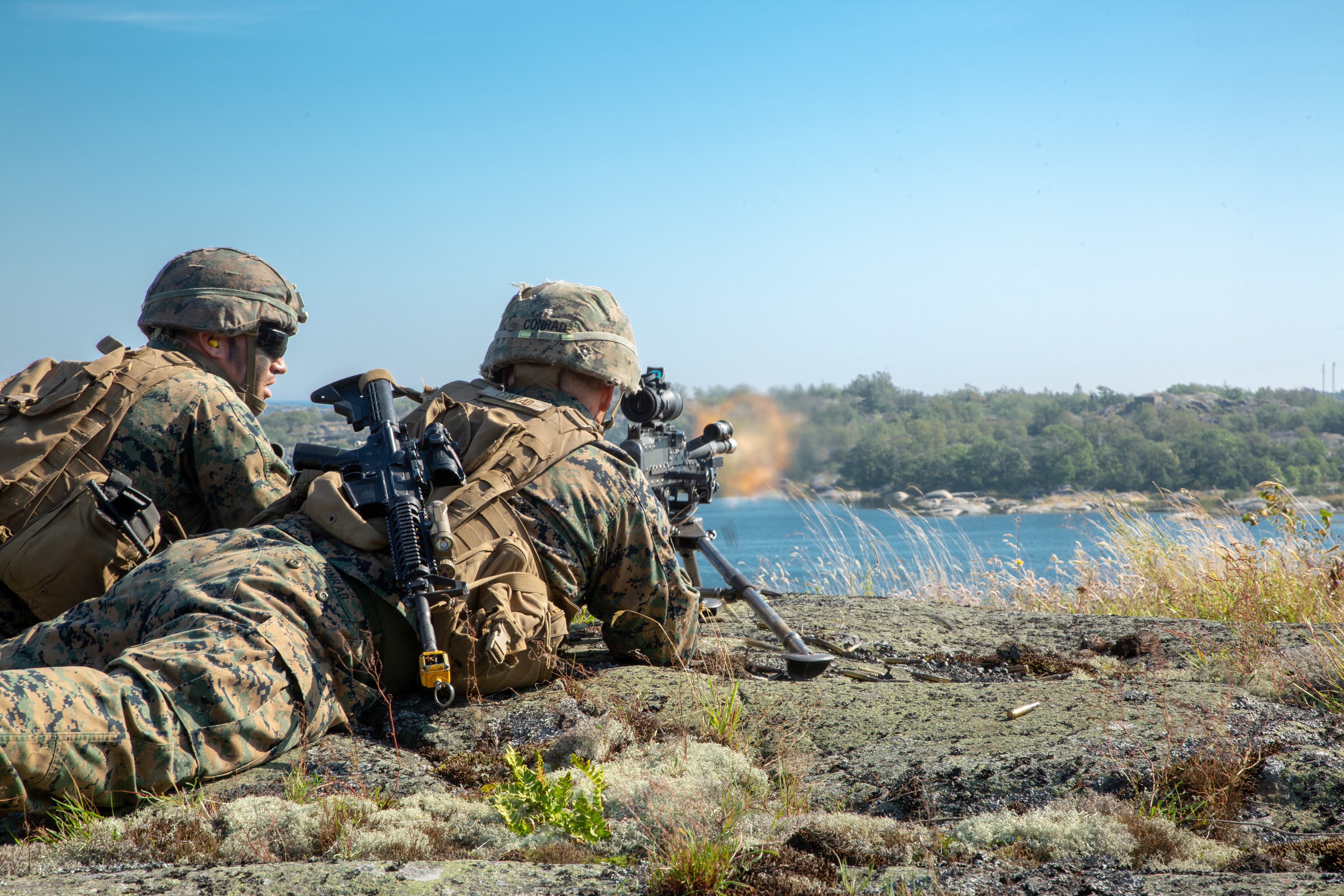The top priority for Marine Corps Commandant Gen. David Berger will likely mean a force that looks and operates substantially different than it has for the past two decades.
That’s because, as Berger said Thursday at The Heritage Foundation think tank in Washington, getting “force design” right is how the Corps will realign itself as part of the naval expeditionary force.
“The current Marine Corps is not optimized for great power competition,” he said.
And the role the commandant sees as part of that naval force is to support the fleet in sea denial and deter the pacing threats that are China and Russia.
RELATED

“We have to do force design and we have to change our posture around the world,” Berger said. “We should not be content to merely try to keep up. We should set the pace.”
How he and other Marine leaders are going about that is still a work in progress, however.
Berger sketched out hints at a plan that involves in looking at what future conflict would look like in 2030 based on both U.S. and adversary capabilities and a series of wargames, experimentation and modeling and simulation to better understand what kind of Marine Corps it will take to meet that challenge.
Shifts to manpower that include adding more electronic warfare, information-centric and cyber Marines at the expense of some more traditional ground combat jobs, Marine Corps Times has reported in recent years. That includes the addition of a Marine Corps Cyber Auxiliary, which would put cyber experts in the ranks, but not necessarily in uniform.
But Berger’s hints were more broad, including his three priorities for the future Corps: an integrated naval force, Marines operating successfully as a stand-in force and distributed maritime operations.
None of the three are necessarily new concepts, some even date back to the deep thinking period of the 1990s as the Corps emerged with the other services from the Cold War and looked to find its footing and future.
But, more specifically, Berger noted that naval integration meant driving toward overlap with the Navy’s mission and what Marines can do to help the naval commander fight his fleet.
That follows with the stand in force, meaning the Marines and navy in the weapons engagement zone.
Every maritime environments going to be contested in all domains, he said. The Marines need to be the force in the weapons range, or weapons engagement zone.
What that does, Berger said, is allow for better situational awareness to inform the rest of the force as the fight unfolds.
It also means more effective deterrence than coming in from outside that zone, Berger said.
Gear development also must be focused on being useful inside the weapons engagement zone, said Lt. Gen. Eric Smith, who heads Marine Corps Combat Development Command, Marine Corps Times reported in September.
“We have to take it with us,” he said. “It has to be affordable and light.”
Smith’s team is looking at ways to reduce the combat operations center footprint, improve ground-based fires, add intelligence, surveillance and reconnaissance platforms and finding novel ways to preposition and deliver gear in high-end combat.
And that leads to the distributed maritime operations, which the commandant said he is “absolutely embracing.” Being able to operate smaller units across wider ranges in coordination can throw a number of problems at the adversary.
Heritage senior research fellow and retired Marine Corps officer Dakota Wood asked Berger how the Corps will advance its concepts when it remains dependent on the Navy to enable that type of warfighting.
Berger said that took a look back to the past 35 years of the Navy-Marine Corps relationship. For the past 20 of those years, the two didn’t actually need each other much.
“We were in the Middle East doing one thing and the Navy was doing another,” he said.
But now, with the nation in need of different work from its military, preparing for near peer conflict, that relationship must change.
The four star said that he has about 80 to 85 percent of where the Corps needs to be in the next decade figured out. The finer points will be worked out in the next few months.
That will continue to be done through analysis and modeling for the future fight. But just as with gear modernization, from divestment to new program priorities, Berger said most of those changes won’t show up in the coming budget cycle but likely in the following year.
Todd South has written about crime, courts, government and the military for multiple publications since 2004 and was named a 2014 Pulitzer finalist for a co-written project on witness intimidation. Todd is a Marine veteran of the Iraq War.





